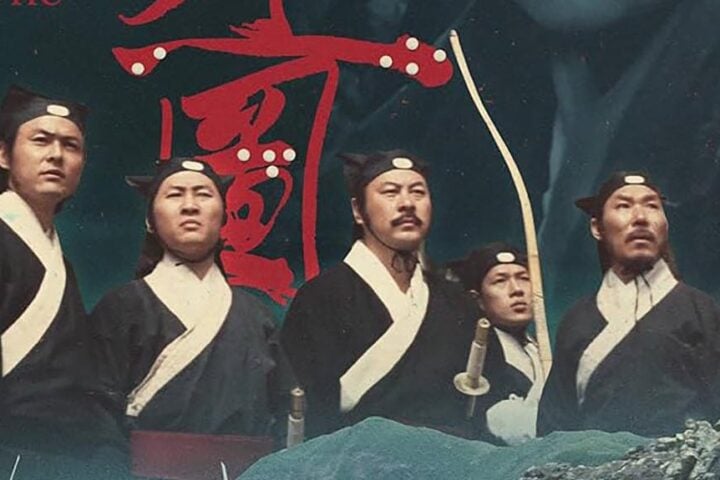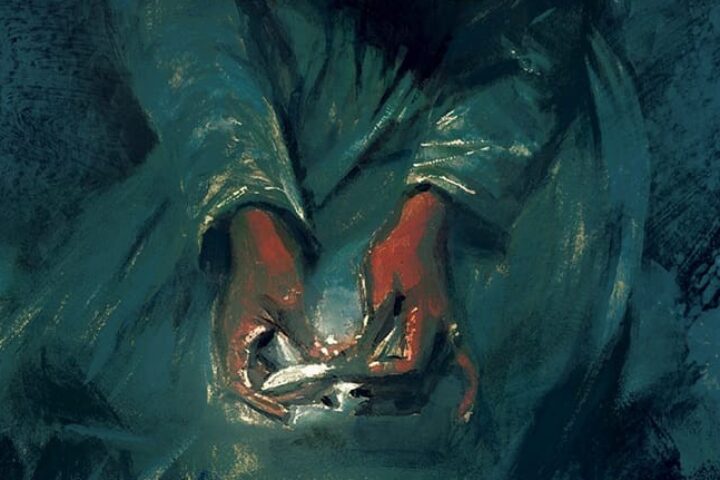For decades, Sômai Shinji, who died in 2001, has been perhaps the most noteworthy Japanese director to find little foothold in the West despite his cited influence on popular contemporary Japanese filmmakers ranging from Iwai Shunji to Hamaguchi Ryûsuke to Kuorsawa Kiyoshi. Typhoon Club, from 1985, ably illustrates how such a disparate range of artists could share a common lineage: Iwai no doubt took from the film’s nonjudgmental observation of the harsh, uncontrollable emotions of youth for his All About Lily Chou-Chou; the allegorical conceit of the approaching storm has a vividly literary thrust that prefigures Hamaguchi’s approach to cinema; and the pervasive mood of constant dread of the quotidian is the bedrock of Kiyoshi’s more genre-oriented work.
Typhoon Club could be best described as an anti-coming-of-age film. Youth movies tend to reveal the nostalgia of their adult makers, looking back on a time that, in retrospect, passed by in the blink of an eye. And even the most carefully observant of such films tend to move at a speed that reflects this outlook, all while putting their young characters through travails that leave them with the first stirrings of real experience and wisdom as they prepare to move into adulthood. Comparatively, Sômai’s film emphasizes the stasis one tends to feel actually living through one’s adolescence, of being perpetually frozen on the cusp of the next step and feeling like the one teen in the world who didn’t get the instruction manual on how to proceed.
Sômai favors long takes that sit with each exchange between characters until the awkwardness of their maladroit insecurity fills every nook and cranny of the frame, at times even retaining moments where the young actors lose concentration or stumble realistically over a line. Itô Akihiro’s camera often moves in elegant, precisely choreographed tracks, pans, and swooning crane maneuvers, but what it captures feels consistently unguarded and raw.
Typhoon Club announces its lack of romanticism out of the gate, opening with a group of schoolgirls nearly drowning a male classmate due to some roughhousing gone wrong. Even after the boy is resuscitated, the girls express little remorse for their actions, with one even skipping merrily the next morning as she calmly recounts the previous night’s exploits.
This is merely the opening salvo of a first act that teems with various conflicts as students disrupt classes, make awkward sexual overtures, and occasionally get into fights as a confused expression of ennui and uncertainty over their identity. Even the adults who might have acted as role models reveal their own failings, as when teacher Umemiya’s (Miura Tomokazu) class is interrupted by his girlfriend’s parents, who proceed to verbally lacerate him for failing to propose marriage and save their daughter from spinsterhood. Humiliated into catatonia, Umemiya merely stands silent as they tear into him, leaving his students to contemplate a similar future if they don’t assert an identity and sense of self-respect now.
As tensions mount, a storm gathers over the course of a few days, rolling in from the Pacific. The typhoon makes landfall one day before most students can get home, trapping them in the school and unleashing what few inhibitions they still have, for both good and ill.
Some kids confess their insecurities or consensually explore their sexual curiosities, but one boy pursues a classmate with disturbing intensity, going so far as to kick in doors she locks between them. A few other dark twists end the film on a haunting note, albeit one that refreshingly sidesteps the usual clichés of the coming-of-age movie. There are no simplistic epiphanies here that prime the characters to face the uncertainty of adulthood, and even the most vulnerable confessions don’t necessarily lead to self-understanding.
Image/Sound
Cinema Guild’s presentation of its 4K restoration maximizes the contrast between the students’ clothes and the school’s white walls and occasional splashes of color from the green hue of a pool lit at nighttime by underwater bulbs or the strings of origami cranes that fill the classroom where the final scene is set. Background detail in the many long shots is consistently sharp and shows no sign of digital artifacts. The soundtrack is similarly clean, immersively balancing primary dialogue against the constant background chatter and noise of disruptive classmates.
Extras
The disc comes with interviews with actress Kudô Yûki, who recounts her memories of the shoot, and filmmaker Kurosawa Kiyoshi, who discusses working under Sômai Shinji as a young apprentice and even mentions that he was once in talks to direct Typhoon Club himself. An accompanying booklet contains an essay by critic Chris Fujiwara that offers an overview of Somai’s career and signature elements amid a more focused analysis of the film.
Overall
Sômai Shinji’s anti-coming-of-age film is as beautiful as it is troubling, and Cinema Guild’s 4K disc wonderfully captures the full splendor of the director’s subtly intricate style.
Since 2001, we've brought you uncompromising, candid takes on the world of film, music, television, video games, theater, and more. Independently owned and operated publications like Slant have been hit hard in recent years, but we’re committed to keeping our content free and accessible—meaning no paywalls or fees.
If you like what we do, please consider subscribing to our Patreon or making a donation.



